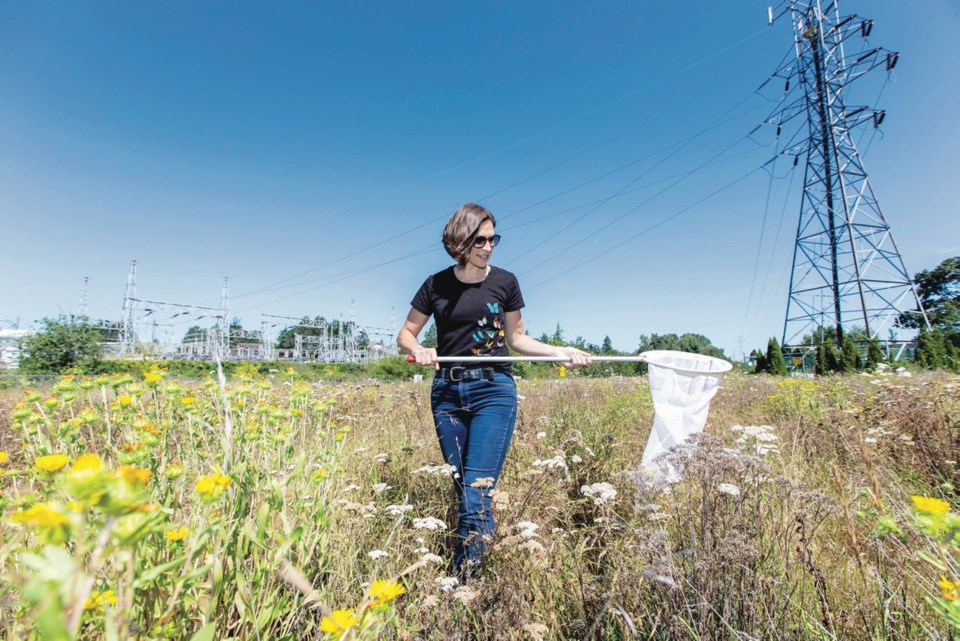You can learn how to attract butterflies and other pollinators to your yard as part of a nationwide environmental effort launched by the David Suzuki Foundation.
Victoria is one of more than 100 Canadian communities taking part in the Butterflyway Project, a citizen-led movement to grow corridors — or butterflyways — connecting patches of habitat, allowing pollinators such as butterflies and bees to travel between them.
With 187 known species, B.C. has the widest variety of butterflies in Canada, and the Island is particularly rich in them, said Winnie Hwo of the Suzuki Foundation. “Vancouver Island is a gem,” Hwo said. “There are butterflies on the Island that we don’t see on the Lower Mainland.”
Butterflies you can expect to see throughout the Island include the Western Tiger Swallowtail and the Green Comma. The Sara’s Orangetip and the Pine White are found on the east and north coast, while the Milberts Tortoiseshell and Western Meadow Fritillary are observed on the west and south.
The Butterflyway Project sees trained volunteers known as Butterflyway Rangers encourage people to plant native wildflowers in gardens, schoolyards, streets and parks.
“We provide guidance and support for the community in improving the health of the ecosystem,” said Kristen Miskelly, owner-operator of Saanich Native Plants and one of the Butterflyway trainers. “We serve as a resource for people seeking information on habitat connectivity.”
The Suzuki Foundation is not the only organization aiming to educate the public on the merits of creating a welcoming habitat for pollinators. Pollinator Partnership Canada has regional guides to help people select the right native plants for their gardens.
The charitable organization lists 13 ecological zones in B.C. — including two dividing eastern and western Vancouver Island — and identifies specific plants with flowers that provide nectar and pollen attractive to pollinators. Also listed are plants that serve as hosts to the larvae of butterflies.
“Planting the right plants will attract keystone species [of pollinators] to your yard,” said the Pollinator Partnership’s Lora Morandin, noting there are more than 850 species of bees in Canada, with close to 200 on Vancouver Island.
While pollinators face threats including habitat loss, pesticides, disease, pests and climate change, even small actions can make a difference, Morandin said.
Vancouver Island has 10 Butterflyway Rangers, some of whom have been in the role since 2017, when the program launched on a regional basis in five cities, including Victoria.
Over the past three years, close to 29,000 butterfly-friendly wildflowers have been planted across Canada, creating more than 750 pollinator patches.
In Greater Victoria, the program has resulted in more than 10 pollinator-friendly gardens in yards, parks and by schools and hospitals.
Victoria Emberley, a Butterflyway Ranger since 2017, said that when she started, there were not many pollinator gardens in Victoria.
She was awarded a municipal grant to build pollinator gardens in Fernwood, and also leads pollinator education programs for local elementary students.
“It’s been transformational for me. I walk around now and see a lot more pollinator gardens planted with native wildflowers,” said the UVic student.
“When I wake up first thing in the morning, I can feel the energy of the land — and feel more connected with nature.”



